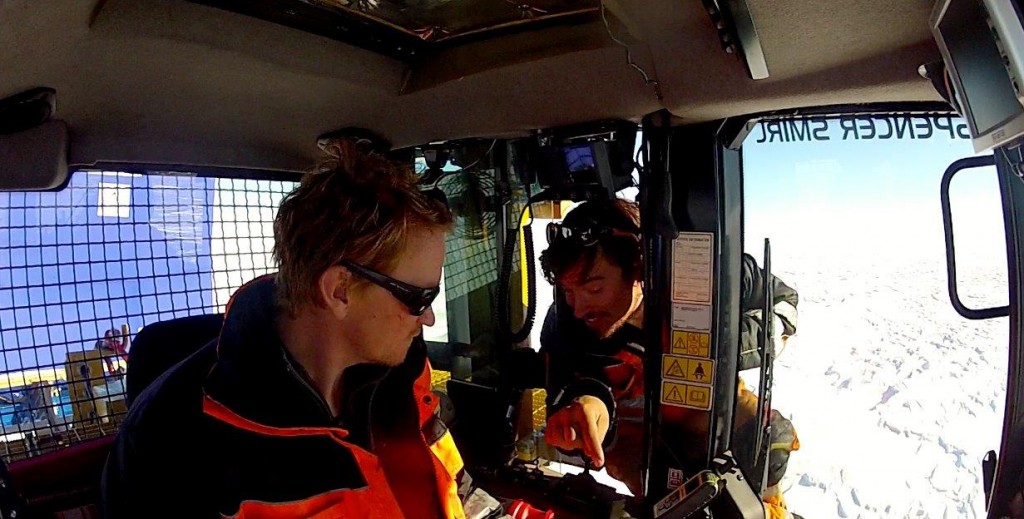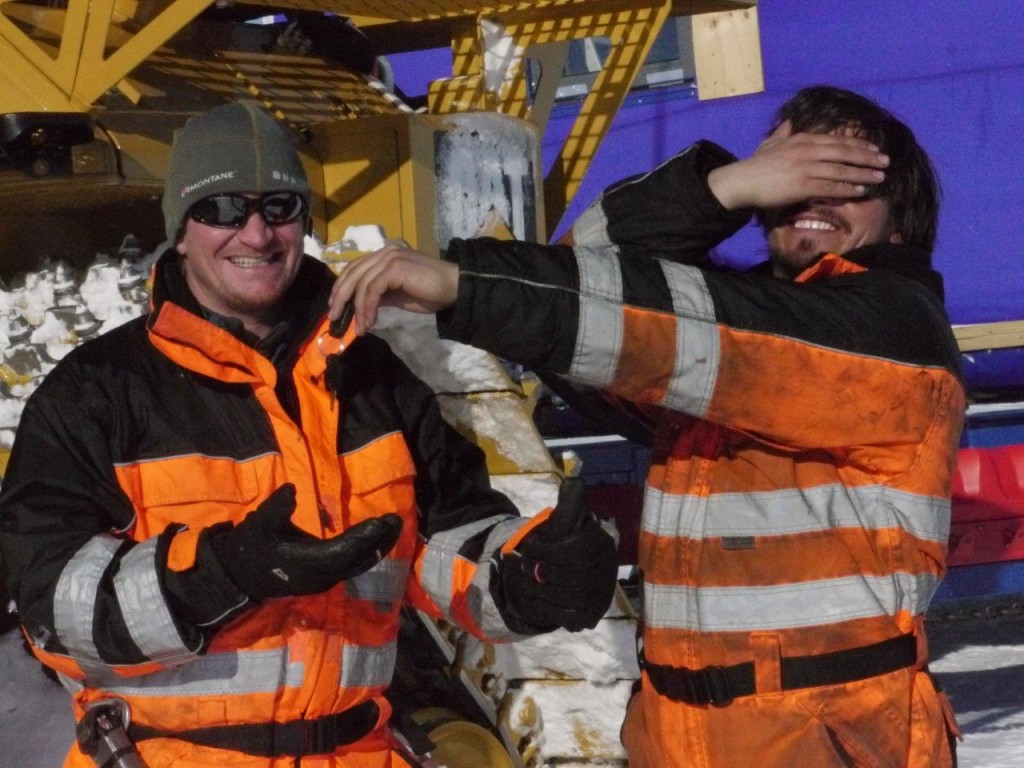The Keys to my Castle – by Spencer Smirl
When Sir Ranulph Fiennes departed from our expedition two months ago now, we were all sad to see our leader go. Without his valiant efforts over the last five years bringing together people and resources from around the world, none of us would have had the privilege of being here. With Ran no longer with us however, there is no longer a full-time skiing element to this crossing, and therefore no-one dictating when and how we travel as we would always have had to work around the skiers, for obvious reasons. In a small way, this might actually increase our chances for success at setting this record. At least, mechanically speking.
In the time since Ran left, it has been collectively decided that we would make the move to a 24hr travel schedule. This is good because it means that the machines will always be running. In the dead of the Antarctic winter, when temperatures negatively advance towards triple digits, this is a better way to operate heavy equipment. Even at -40C, it can take up to a half day to get the machine completely up to operating temperature. By not shutting down and not stopping for extended periods, we will retain all of this heat and eliminate the daily thermal shift that the D6Ns would have otherwise been subject to. The elimination of this constant expansion and contraction of all the materials that assemble our bulldozers will help keep them in one piece over the next five to seven months.
With the good comes the bad. Only two of the five members remaining in this Ice Team have any kind of valuable operating experience when it comes to Caterpillar D6N Track Type Tractors. We realised some time ago now that the other three would have to be trained, and quickly. The harsh environment of Antarctica is normally a bad place to be learning a new skill of any kind. If you are here, it is because you are really good at something and that is what you have been brought here to do. However, as it has been discovered, the D6Ns will not pull over twice their manufacturer’s recommended draw bar load, at anything more than 3.5km/hr. We need to run longer hours so that we can; A) accumulate greater daily distances, and B) take better advantage of good weather when it comes.
 Whilst we were returning from our fuel depot to the coast with a skeleton load – about 25 tonnes per Cat – and a straight forward descent back to Crown Bay, we had ideal conditions for training. Well, as ideal as conditions in Antarctica can be! Seated outside the cab, on the beautiful folding catwalks designed and fabricated by Finning in Cannock, I leaned through the left hand side window and gave condensed operating clinics to the three non-drivers, specific to our unique situation. Starting with Rob, then Ian and lastly Brian, they each spent nearly four hours driving and listening to me be extremely overly thorough – even for me – about the do’s and do not’s of operating a bulldozer in extreme conditions with limited spare parts.
Whilst we were returning from our fuel depot to the coast with a skeleton load – about 25 tonnes per Cat – and a straight forward descent back to Crown Bay, we had ideal conditions for training. Well, as ideal as conditions in Antarctica can be! Seated outside the cab, on the beautiful folding catwalks designed and fabricated by Finning in Cannock, I leaned through the left hand side window and gave condensed operating clinics to the three non-drivers, specific to our unique situation. Starting with Rob, then Ian and lastly Brian, they each spent nearly four hours driving and listening to me be extremely overly thorough – even for me – about the do’s and do not’s of operating a bulldozer in extreme conditions with limited spare parts.
Am sure they will make me proud!
Comments are closed


There are 3 comments